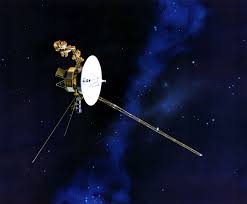
Introduction
Launched in 1977, Voyager 1 has become a symbol of humanity’s quest for exploration and knowledge. As the first human-made object to enter interstellar space, it holds critical importance for deploying new understandings of the universe. The probe has provided scientists with invaluable information on the heliosphere, interstellar medium, and the outer planets, making it a focal point in ongoing studies of astrophysics.
Voyager 1’s Journey
Initially intended for a four-year mission to study the outer planets—Jupiter, Saturn, Uranus, and Neptune—Voyager 1 far exceeded expectations. After completing its primary objectives, the mission was extended to study the boundaries of our solar system. In 2012, Voyager 1 made history by crossing the heliopause, the boundary where the solar wind is stopped by the pressure of interstellar medium, thus becoming the first human-made object to enter interstellar space.
Recent Developments
As of 2023, Voyager 1 is over 14 billion miles from Earth. It continues to send data back to NASA, albeit at a significantly reduced rate due to the vast distance. Recent updates from NASA confirm that Voyager 1 is still operational and collecting data, providing insight into cosmic rays and magnetic fields that exist in interstellar space.
Scientific Contributions
The data collected by Voyager 1 has profoundly expanded our knowledge of space. Its findings have helped scientists understand the structure of the heliosphere, the nature of cosmic rays, and even phenomena such as magnetic reconnection. The probe has also offered a unique perspective on the Sun’s influence on the surrounding interstellar medium, significantly contributing to the fields of heliophysics and astrophysics.
Conclusion
Voyager 1 continues to pave the way for future exploration outside our solar system. Its journey is a testament to human ingenuity, serving not only as a scientific endeavor but also as a symbol of exploration, reminding us that there is much more to discover beyond what we currently understand. As we look to the future of space exploration, the legacy of Voyager 1 will undoubtedly continue to inspire new generations of scientists and explorers.



